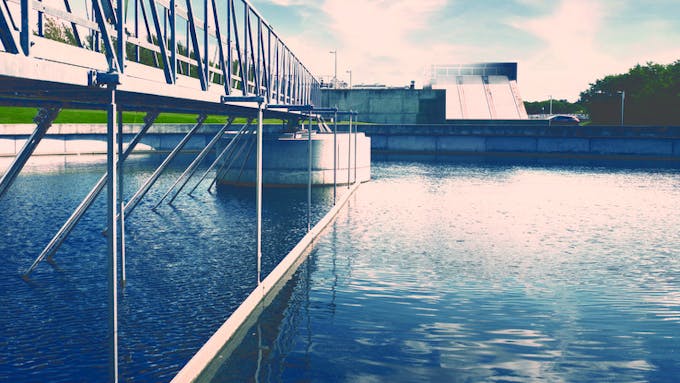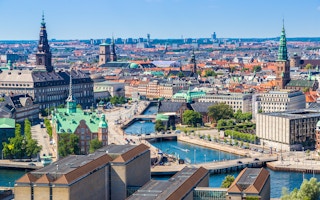As Asia grapples with its water crisis and seeks ways to alleviate the impact of water pollution, on the other side of the world, Denmark is experimenting with some of the world’s most innovative wastewater treatment methods.
To continue reading, subscribe to Eco‑Business.
There's something for everyone. We offer a range of subscription plans.
- Access our stories and receive our Insights Weekly newsletter with the free EB Member plan.
- Unlock unlimited access to our content and archive with EB Circle.
- Publish your content with EB Premium.
In some cases, the Scandinavian nation has successfully applied them on a commercial scale, which can have huge potential in Asia.
One of these trials involves the treatment of wastewater from the country’s second-largest hospital Herlev Hospital, located in a suburb in Danish capital Copenhagen.
Wastewater from hospitals all over the world is problematic because of its complex mixture of medicines, pathogens and antibiotic-resistant bacteria.
Until now, no treatment plant in the world has been able to remove these substances completely before the water is discharged to waterways. In the case of Denmark, such wastewater from hospitals is sent to the local utilities to be treated along with other wastewater.
While the impact on human health of these substances hasn’t been scientifically established, there are suggestions that they could be harmful in the long term.
For example, a study by a team of scientists at University of Colorado has found evidence that estrogen in contraceptive pills may be turning fish into hermaphrodites, and that anti-anxiety drugs make perch in Swedish waters more mellow and have bigger appetites.
And like all hospitals in the country, Herlev, also a teaching hospital for medical students from Copenhagen University, had been directly discharging its wastewater to municipal wastewater treatment plants.
The 1,600-bed hospital discharges some 490 cubic metres (cu m) of wastewater daily, which contains traces of about 1,000 drugs.
“
Every year, 3 per cent of Denmark’s energy consumption goes into collecting and treating wastewater throughout the country. While it is necessary, the high usage has also prompted municipals – largely responsible for treating local wastewater – to find ways to be more energy-efficient and recover more energy at their plants.
To stay one step ahead of regulations – which don’t yet exist for hospital wastewater – the regional government of Greater Copenhagen, Herlev Hospital and a number of private companies, including Danish water giants DHI and Grundfos, came together in 2011 to look for a solution.
In 2012, the public-private partnership found a breakthrough, using technology provided by Grundfos, a global supplier of water and wastewater systems. The team started trials that year and a commercial-scale plant was built at the site of the hospital two years later.
Dr Jose Antonio Gil Linares, application specialist at Grundfos who oversaw the project, says that what differentiates the company’s BioBooster system is its rotating membranes, which act as a filter for tiny impurities.
Next, ozone is used to treat any remaining contaminants from the water; the final step is a UV treatment, after which the water is discharged to utilities.
Sludge - the final product from the treatment process - is then shipped to incinerators.
All the treatment is done on-site, at a purpose-built treatment plant that costs 42 million kroner.
The water can technically be reused for recreational or industrial purposes at the hospital but it now has to be discharged back to the municipal treatment plant because there’s no regulation in Denmark for the direct reuse of water.“This is as good as it gets,” says Jess Krarup, project engineer at Herlev Hospital. “The technology can remove 90 per cent of the most hazardous residues, or at least to below detectable levels. You can drink it without fear.”
Now that the technology is proven to be sound, however, the public-private partnership is lobbying the government to allow the hospital to either reuse it or discharge directly to a waterway, hence bypassing the municipal treatment plant and saving hundreds of thousands of kroner on taxes it pays to the municipal every year.
Eventually, the regional government of Greater Denmark and Herlev Hospital want to implement the solution at other hospitals in the rest of the country.
“Aside from the one in Herlev, there are only two in Germany and one in The Netherlands,” says Dr Linares, referring to water treatment plants using BioBooster technology.
He adds he expects the Danish government to begin drafting up regulations soon to require hospitals to clean up their wastewater.
The potential for this technology extends far beyond hospitals, however. Linares says that only 5 percent of the total drugs found in wastewater in Denmark are produced by hospitals; the remaining 95 per cent is discharged from domestic wastewater, which contain a wide of drugs.
“I think it’s a matter of time before this technology is used more widely in all sorts of plants,” he says.
Doubling up as power generator
Another noteworthy project is the Marselisborg Wastewater Treatment Plant in Denmark’s second-largest city Aarhus.
What’s special about this plant is not that it cleans wastewater but that it also produces enough electricity to power itself for the entire year, and has excess energy to sell.

Marselisborg Wastewater Treatment Plan in Aarhus, Denmark. Image: Danfoss
Every year, 3 per cent of Denmark’s energy consumption goes into collecting and treating wastewater throughout the country. While it is necessary, the high usage has also prompted municipals – largely responsible for treating local wastewater – to find ways to be more energy-efficient and recover more energy at their plants.
Setting itself apart from traditional energy-guzzling treatment plants, the Marselisborg facility actually generates power as it treats sewage.
Water and wastewater treatment processes are characterised by high load variation during the 24 hour cycle and this load also varies according to seasons throughout the year.
The plant uses more frequency converters in order to control blowers, pumps and other motorised equipment, and to adapt to the changing demand.
Frequency converters are installed on almost all rotating equipment at the Marselisborg plant: blowers, pumps, mixers and dewatering pumps, says Danfoss, the company which supplied the equipment. The frequency converters allow the plant to adapt to load variations with maximum flexibility, it says.
More than 100 motors are controlled by Danfoss’s frequency converters at Marselisborg.
Last year, the plant generated 40 per cent more energy than it used, selling the excess to the local power utility. It also sold 2.5 GWh (gigawatt hours) of heat to the district heating system.
“The dream is for all plants in the country to be energy generators,” Husum says. “The question is: why not?”
Where researchers rule
Some of the innovations in Denmark are still being pursued in the country’s labs. At the Technical University of Denmark, for instance, researchers are finding ways to take wastewater treatment to the next level – recovering other resources from wastewater.
One study involves the cultivation of microbes responsible for wastewater treatment, says Bart F Smets, Professor at the university’s department of Environmental Engineering.
This is a method one team of researchers is experimenting with that has the potential to remove nitrogen more efficiently and more cheaply, Prof Smets says.
Researchers in another team are trying to cultivating algae in wastewater to extract nitrogen and phosphorus – among the best fertilizers.
The university is applying for funding for a pilot project at the country’s largest wastewater treatment plant at Lynetten in Copenhagen.
Technically, these solutions and applications can be applied anywhere in the world, especially in areas where water is scarce, Prof Smets says.
“The potential is there, yes,” he says, “Once these technologies are proven to be viable, we can technically use them anywhere, and that’s the ultimate aim, to commercialise our research. We would love to see them applied somewhere in Asia.”








